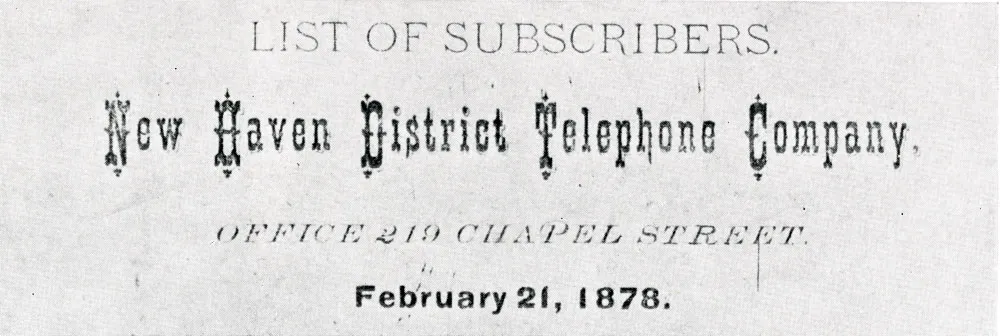The First Telephone Book Had Fifty Listings and No Numbers
It came out less than two years after Alexander Graham Bell invented the device
/https://tf-cmsv2-smithsonianmag-media.s3.amazonaws.com/filer/ad/18/ad18df44-f4f0-4041-999b-ec56b1d68cca/fttr_rtt56b_telephone_2.jpg)
We know exactly when the now-defunct expression “I’m in the book” became a saying: 1878.
Since the advent of the internet, the print phone book has largely become an artifact of a past age. At least one city has attempted to ban the phone book’s yellow pages on environmental grounds. But in February 1878, the phone book was cutting-edge technology.
First published on this day in 1878, the telephone directory widely considered to be the absolute first phone book was nothing but a sheet of cardboard with the names of both private people and businesses who had a telephone.
The fact that there were 50 people to call in New Haven, Connecticut in 1878 definitely had something to do with the fact that the telephone was invented near there less than two years previously and was first demonstrated by inventor Alexander Graham Bell in New Haven.
George Coy, who founded the New Haven telephone network, saw a Graham Bell demonstration in April 1877. Writing for the University of Connecticut’s archive blog, Laura Smith tells the story of how Coy, employed by a local telegraph company, turned that demonstration into the world’s first telephone exchange.
In November 1877 he was awarded a Bell telephone franchise for New Haven and Middlesex counties and spent the next two months getting partners and financial backing. On January 28, 1878, the New Haven District Telephone Company, in a rented storefront office in the Boardman Buiilding at the corner of Chapel and State Streets, opened for business with 21 subscribers, each of whom paid $1.50 per month for the service.
That number had ballooned by the time the directory came out. Coy’s network was made possible by the switchboard, which he invented to accommodate multiple call locations. Before that, Smith writes, the first telephones were privately used on direct lines.

Telephones—and telephone books—quickly caught on, and the first New Haven telephone book that was more than just a sheet of cardboard was published in November 1878. In 2008 a copy of that book made headlines when it was sold at auction for $170,500.
As author Ammon Shea told Jason Zasky for Failure Magazine, early phone books looked a little different than the ones published today (although it’s not likely you have regular contact with one of those either.) For one thing, they often had instructions explaining how a telephone was used. “When people first started using the telephone they would often yell into the wrong part,” Shea said. And when they did get on the phone, they had to figure out what to say to start a conversation: “Ahoy” was Alexander Graham Bell’s preferred option.
It’s not actually that strange that the first phone book had only the name of the person whose phone it was, Shea said. People resisted the idea of actually dialing a number themselves well into the twentieth century, preferring to speak to the switchboard operator and have that person direct their call.